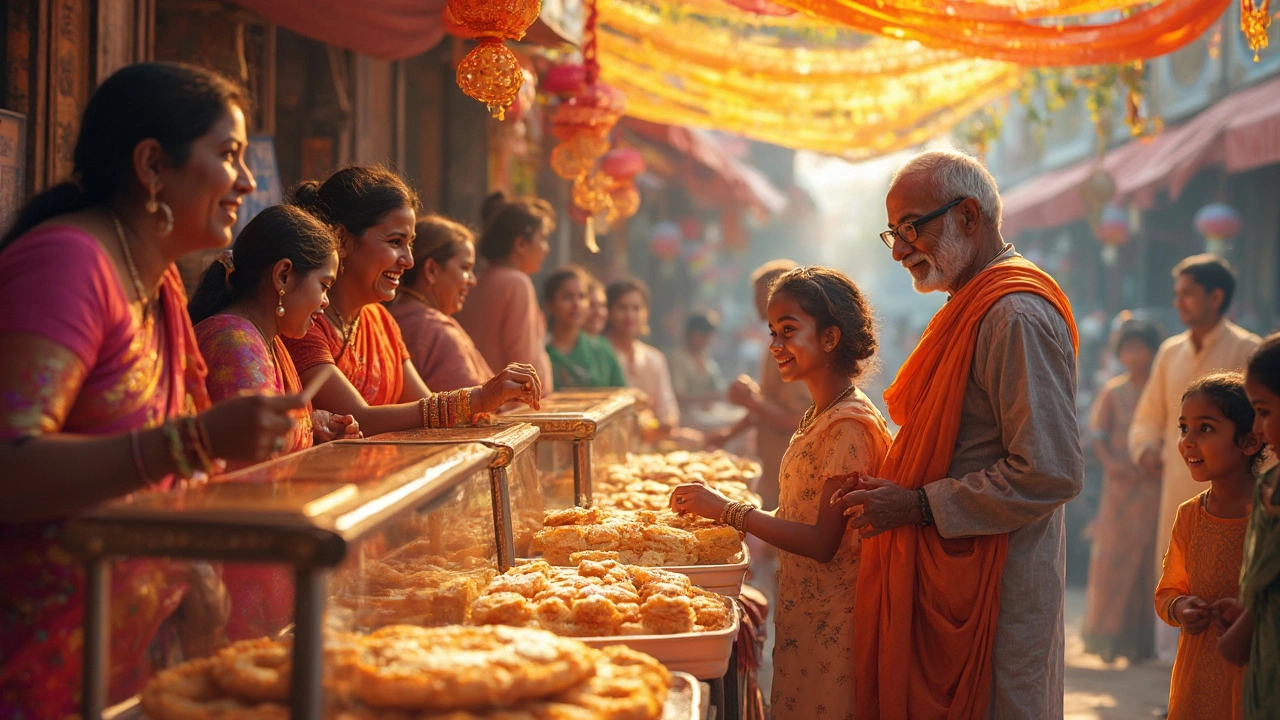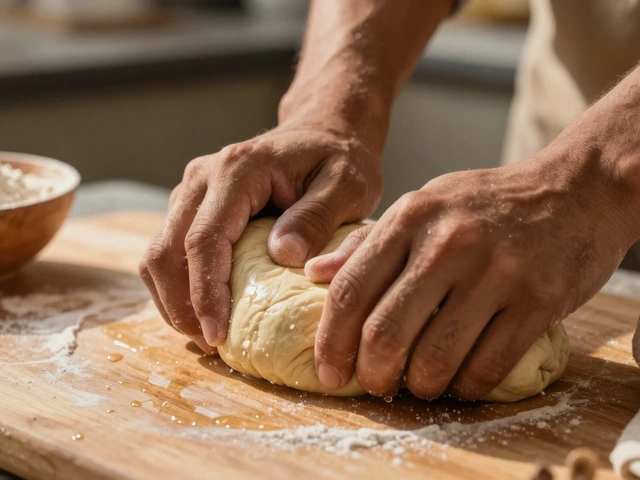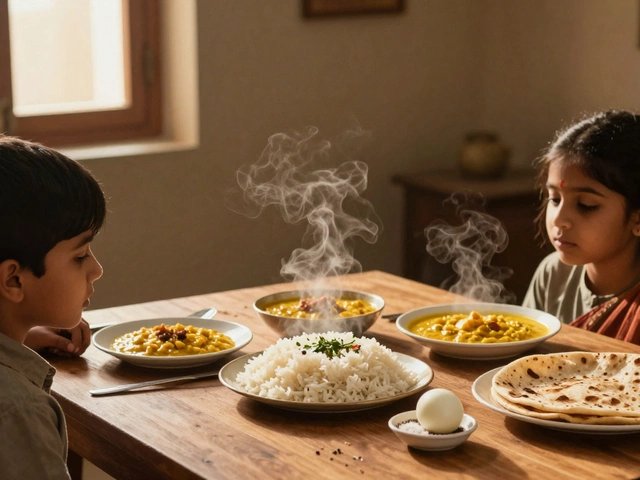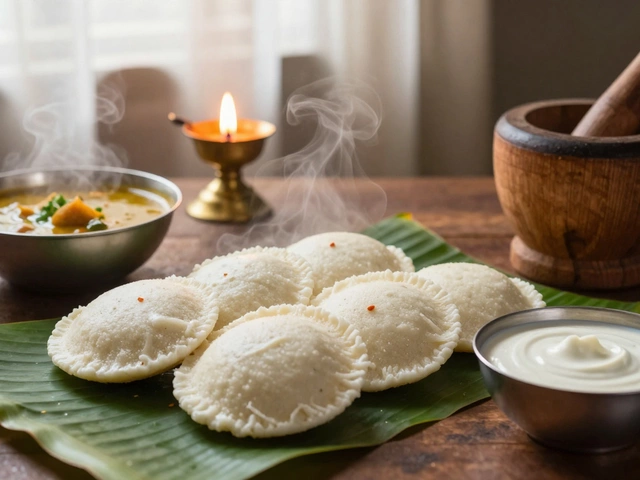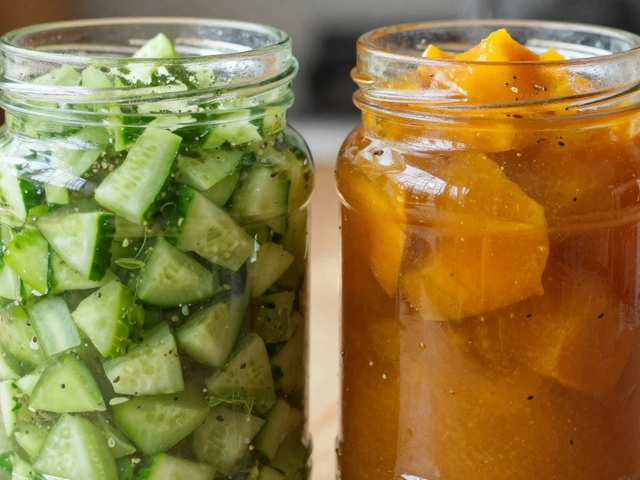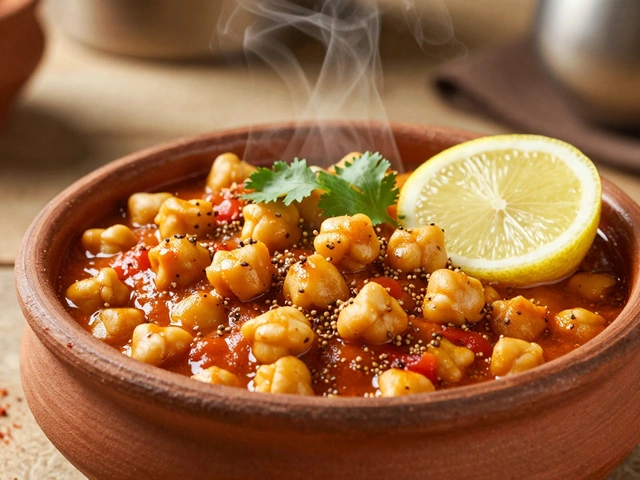Sugar pops up everywhere—morning chai, birthday cakes, Diwali laddus. Ever stopped to wonder which group actually eats the most sugar? If you’ve got a sweet tooth, especially for Indian desserts, the global sugar race might surprise you. Different countries, and even communities within them, have crazy differences in sugar cravings and habits. It isn’t just about what’s on your plate; it’s about culture, tradition, and sometimes, just pure celebration.
Spend a day in almost any Indian household and chances are, a bowl of something sweet finds its way to your hands. Sweets aren't just food in India; they’re tradition, inheritance, even a way to welcome guests. With recipes passed down generations, Indian sweets have shaped how sugar fits into everyday life—not always in moderation, either. Yet it’s worth asking: do Indians really top global sugar charts, or are there some surprises hiding in those statistics?
- Sugar by the Numbers: Who Eats the Most?
- How Indian Sweets Drive Sugar Intake
- Why Do We Crave Sugar So Much?
- Balancing Sweets and Health
- Tips for Enjoying Indian Desserts Mindfully
Sugar by the Numbers: Who Eats the Most?
If you’re picturing India at the top of the sugar consumption leaderboard just because of Indian sweets, hang on a second. When it comes to total sugar eaten per person each year, the real chart-toppers are in the West. The United States is famous (or maybe infamous) for high global sugar intake. According to World Health Organization stats, the average American adult eats around 57 kilograms of sugar a year—that’s over 150 grams a day! To put it in perspective, that's about 38 teaspoons every single day.
Here’s a quick comparison with recent numbers (based on 2023 data):
| Country | Average Sugar Intake (kg per person/year) |
|---|---|
| United States | 57 |
| Germany | 52 |
| United Kingdom | 50 |
| India | 19 |
| Japan | 16 |
Europeans, especially in Germany and the UK, also get through a lot of sugar, with their love for chocolates, pastries and sodas. Asia sits on the lower end by comparison, including India, even with all the gulab jamuns and jalebis you see at festivals or weddings. One big reason? In Western countries, a lot of sugar sneaks in through sodas, breakfast cereals, and processed snacks—not just obvious desserts.
Another thing to remember is that sugar consumption isn’t just about what you scoop into your tea or coffee. It shows up in packaged bread, instant noodles, sauces, and even salad dressings. So people often eat more sugar than they realize.
The bottom line: when it comes to pure numbers, the US and Western Europe have a sweet spot in the wrong way. India loves its desserts, but average intake is still a lot lower than most Western countries. Surprised?
How Indian Sweets Drive Sugar Intake
If you’ve ever been offered a plateful of gulab jamun, jalebi, or rasgulla, you already know that Indian sweets are intense on the sugar scale. A single piece of gulab jamun can pack up to 15 grams of sugar. That’s about four teaspoons—almost like tossing a handful of sugar cubes into your mouth. Sweets aren’t just for parties either; they show up at festivals, weddings, religious offerings, or just as a quick snack with chai.
What makes Indian sweets recipes stand out is how they use sugar as a star ingredient, not just a background flavor. Syrup-soaked treats, condensed milk, khoya, and crystalized sugar—these are the backbone of Indian desserts. For example, jalebis are literally fried flour swirls soaked in sugar syrup, while sandesh relies on thickened milk and sugar, shaped into bite-sized treats.
It’s easy to lose track of how much sugar goes into a normal serving. A quick look at some typical sweets:
- Gulab Jamun (2 pieces): 30-40g sugar
- Jalebi (1 piece): 20g sugar
- Ladoo (1 piece): 15-18g sugar
- Barfi (1 piece): 12-15g sugar
Compared to Western desserts, Indian sweets usually have a higher ratio of sugar per bite. Here’s how a typical serving of Indian desserts stack up to others:
| Sweet | Serving Size | Sugar (g) |
|---|---|---|
| Gulab Jamun | 2 pieces | 35 |
| Jalebi | 2 pieces | 40 |
| Donut (glazed) | 1 piece | 12 |
| Chocolate Cake | 1 slice | 21 |
It’s not just about quantity—frequency matters too. Sweets are a go-to for even the smallest wins or rituals. Birthdays, exams, new jobs, or simply host a friend—sugar is always in the mix. This steady, casual consumption means people can easily tip over recommended limits. The World Health Organization advises adults to stick to less than 25 grams of free sugar a day, but one average serving of many Indian desserts can blow right past that.
Next time you’re about to dip into that mithai box, just think—sometimes a little really does go a long way, especially with these treats.

Why Do We Crave Sugar So Much?
If you’ve ever stared longingly at a plate of freshly made Indian sweets or reached for a second helping of sugar-laden desserts, you’re definitely not alone. Our love for sweets isn’t just about taste or habit. It’s hardwired into the brain, thanks to evolution. Thousands of years ago, finding sweet food meant finding energy—something our ancestors needed to survive. So, when you eat something sweet, your brain releases dopamine, the feel-good hormone, making you want more.
Certain studies show that sugar lights up the brain’s reward system pretty much like some addictive substances do. That’s why we keep coming back for more, even when we know there might be a sugar overload happening, especially during festivals and celebrations in India.
Culture plays a massive role too. In India, offering sweets is a sign of friendship and kindness. Festivals, birthdays, and even job promotions come with a box of something sweet. That sense of tradition and emotional connection to Indian sweets makes it easy to reach for gulaab jamuns or jalebis without a second thought. The sweet spot in our celebration isn’t just about taste—it’s about the memories that come with it.
And here’s something wild—your body actually learns to expect sugar at certain times. Ever notice craving something sugary with your evening chai? That’s habit, not hunger. Our taste buds adjust too. The more sweet stuff you eat, the more you need to feel that same buzz.
To sum it up, our sugar consumption is driven by:
- Brain chemistry and reward loops
- Cultural habits and traditions
- Emotional connections and special memories
- Learned routines and taste bud adaptation
Here’s a snapshot comparing average daily sugar intake by country, according to a recent World Health Organization report:
| Country | Average Daily Sugar Intake (grams) |
|---|---|
| USA | 126 |
| India | 58 |
| UK | 100 |
| Brazil | 90 |
| Japan | 57 |
So next time you reach for that sweet treat, remember—it’s a mix of biology, culture, and daily habits. Being mindful of your sugar intake doesn’t mean avoiding all sweets; it just means understanding why you want them in the first place.
Balancing Sweets and Health
It’s easy to get carried away with sugar consumption, especially if you’re surrounded by tempting Indian sweets. The key challenge? Finding a way to enjoy your favorite desserts without sending your health off track. Indians, on average, eat more sugar than what the World Health Organization recommends. The WHO suggests capping added sugar at around 6 teaspoons (25 grams) a day for adults, but studies from 2023 show city folks in India can double that—sometimes even more during festivals.
Why does it matter? Eating too much sugar is linked to higher risks of diabetes, heart problems, and even dental issues. But deprivation never works, right? Instead, a few tweaks help keep things balanced without ditching what you love:
- Smaller portions: Don’t load up your plate. Start with one piece of barfi, not three.
- Skip sugar-loaded drinks: Cut back on sweetened chai or sodas, and save your sugar budget for the good stuff—desserts.
- Go easy on syrup: Reduce the amount of sugar syrup (“chashni”) in homemade recipes. Most times you won’t even notice a slight reduction.
- Try natural sweeteners: Swap a part of the white sugar for jaggery or dates, which sometimes come with trace minerals.
- Pick homemade over store-bought: Sweets from shops are often packed with way more sugar and preservatives than recipes made at home.
Check out how sugar intake stacks up for India vs. a few other sweet-loving countries:
| Country | Average Daily Sugar Intake (grams) |
|---|---|
| India (urban, festive season) | 50-60 |
| USA | 70-85 |
| Brazil | 60 |
| UK | 60-70 |
So, even though sugar is a huge part of the Indian sweets scene, it doesn’t mean you have to give it up completely. Moderation, smart swaps, and really savoring every bite? That’s a recipe your taste buds and your health can both get behind.
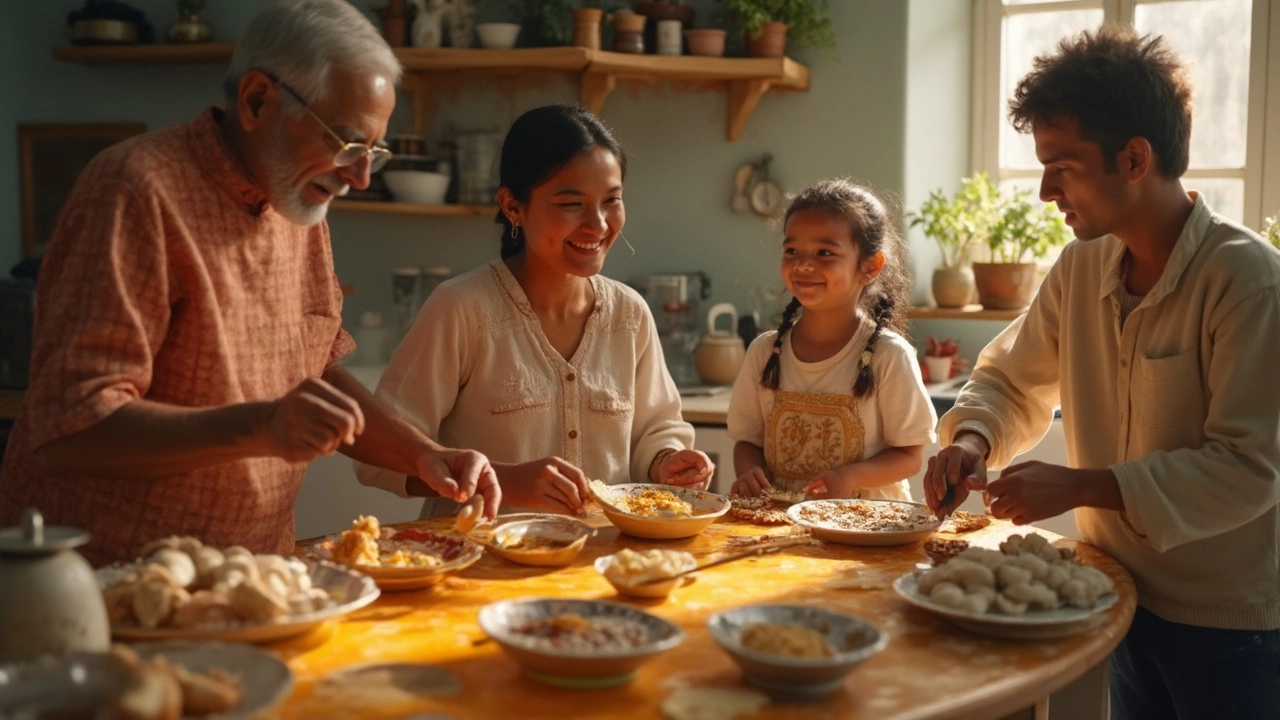
Tips for Enjoying Indian Desserts Mindfully
It’s tough to say no to jalebi, gulab jamun, or a steaming bowl of kheer. The good news? You don’t have to skip your favorite Indian sweets to stay healthy—you just need to get a little smarter about how and when to have them.
Let’s start with portion size. Experts at India’s National Institute of Nutrition recommend limiting added sugar consumption to less than 10% of your daily calories. For most adults, that’s about 50 grams of sugar a day, and that adds up quickly with mithai. Here’s a quick breakdown:
| Dessert | Typical Serving Size | Sugar per Serving (g) |
|---|---|---|
| Gulab Jamun | 2 pieces | 38 |
| Rasgulla | 2 pieces | 28 |
| Jalebi | 50g | 35 |
So, those second (or third) helpings? They add up fast. Want to cut back but still enjoy dessert? Try these easy strategies:
- Share the love: Split a serving with a friend. You get the taste without overloading on sugar.
- Homemade hacks: When making Indian sweets at home, reduce sugar by a quarter. Most recipes still taste great with less sweetness.
- Choose wisely: Pick sweets made with nuts, chana dal, or coconut for extra fiber and protein. They fill you up faster and slow sugar spikes.
- Festive treats stay festive: Save traditional mithai for special occasions. Make them feel special instead of daily habits.
- Watch hidden sugar: Even "healthy" sweets like fruit chaat or shrikhand can sneak in sugars from canned fruit or extra syrup.
A report from the World Health Organization puts it clearly:
"Reducing sugar intake even by small amounts can make a significant difference in health over time, especially in populations with high rates of diabetes."
If you love experimenting in the kitchen, swap out table sugar for jaggery, dates, or honey in small amounts. These alternatives still count as sugar, but they bring a touch of vitamins and minerals too. Oh, and don’t forget—water or unsweetened chai on the side can help balance out those sweet bites.
It’s not about giving up desserts you grew up with. It’s about enjoying them in a way that makes you feel good—both now and years down the road.
